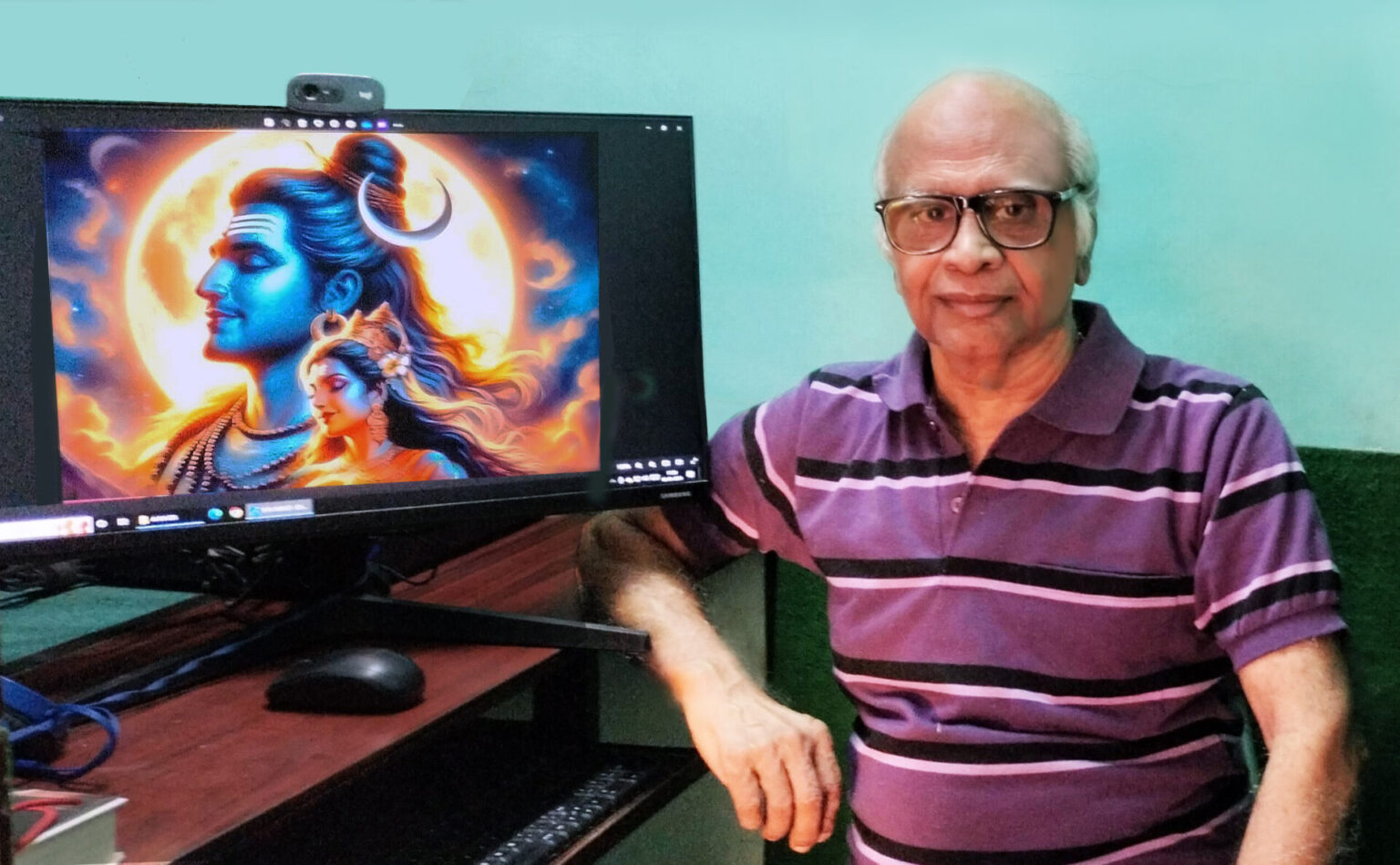‘Shivam’ showcased 12 artworks generated using artificial intelligence, portraying various forms of Shiva and Shakti.
A first-of-its-kind art exhibition recently took place at Ernakulam Shiva Temple in Kerala, showcasing a captivating fusion of artistry and cutting-edge technology. Titled “Shivam,” the exhibition featured 12 artworks, each generated using artificial intelligence (AI) and portraying various forms of Shiva and Shakti.
Conceived by artist and Kathakali scholar C P Unnikrishnan, the exhibition was a highlight of the temple’s Shivaratri celebrations. Using Generative AI tool, DALLE 3, that converts text to image using natural language inputs, also called prompts, Unnikrishnan embarked on a journey that leveraged deep learning methodologies with centuries-old themes, marking a significant departure from conventional artistic practices.
For Unnikrishnan, a retired science teacher, the process of image generation became a interesting exploration months back. Drawing from his background in fine arts and a Ph.D. in Kathakali, he views AI as a complementary tool rather than a substitute for traditional artistic expression. Emphasizing the indispensable role of an artist’s imagination in crafting visual narratives, Unnikrishnan highlights the efficiency gains AI offers, streamlining production timelines and minimizing costs while preserving the essence of artistic vision. “This is the next level of change in the art space. Years back we moved from manual drawing to digital tools like photoshop. Generative AI is another level of expansion,” he said.
However, navigating the technical intricacies of AI posed some challenges, particularly in accurately capturing the nuances of Indian anatomy within digitally rendered images. While some prompts yielded results that aligned perfectly with his imagination, others necessitated multiple iterations and refinements. Unnikrishnan explained, “With training data predominantly reflecting Western body types, I had to use multiple prompts and various keywords to generate Indian body types. I also utilised tools like Photoshop to further refine the images and achieve the desired output.”
Amidst the broader discourse on the evolving role of technology in artistic creation, Unnikrishnan remained steadfast in his belief that AI serves as a facilitator rather than a disruptor of artistic traditions. “AI presents an exciting opportunity to streamline the creative process, potentially reducing the time and resources required to bring an artist’s vision to life,” he said. “Imagine, what once took days or weeks could now be realised in a matter of minutes.”

